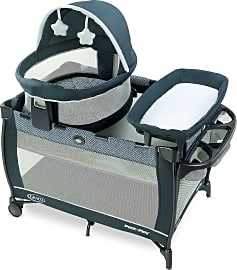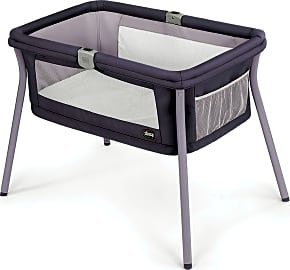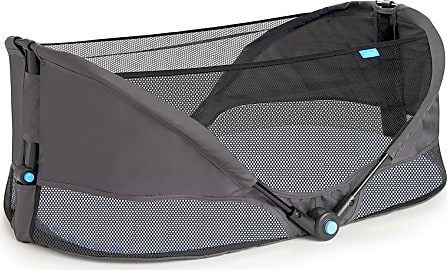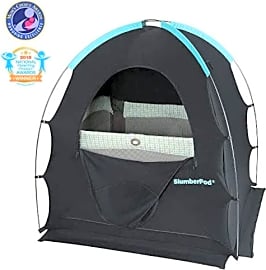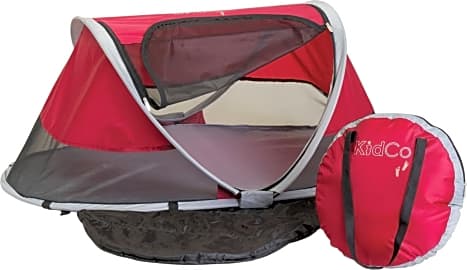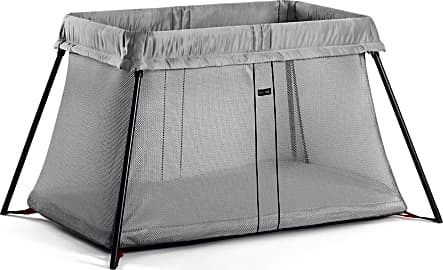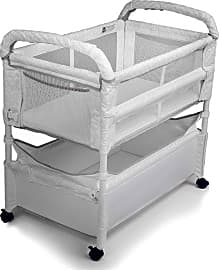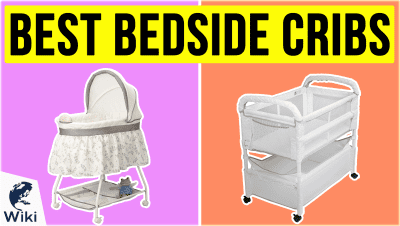The 10 Best Travel Cribs

This wiki has been updated 41 times since it was first published in April of 2015. Don't skimp on safety for your baby when you visit relatives or go on vacation. A well-made portable travel crib will keep your infant cozy and secure, increasing the chance that the whole family will get a good night's sleep. We've included ultralight models that fold up small enough to take on an airplane, plus larger options that accommodate toddlers and double as play yards. When users buy our independently chosen editorial picks, we may earn commissions to help fund the Wiki.
Editor's Notes
March 18, 2020:
The Guava Family Lotus takes the top spot for it's thoughtful design that lends itself to all kinds of travel, especially flying. It folds into a backpack that is designed to meet the carry-on size limitations of most airlines. Plus we like how the mesh sides can zipper all the way down for easier access, great for short people.
While it's the heaviest of all our choices, the Graco Travel Dome LX is a top choice because it is still quite portable, especially for car trips, and ensures you have a comfortable, designated changing area for longer trips.
We decided to include the Slumber Pod, even though you need to pair it with an actual travel crib, This ingenious cover transforms a regular travel crib into a little darkened room for sensitive babies who need to block out light and distractions for sleeping.
Tucking Tots In Away From Home: Choosing A Travel Crib
And for the record, a travel crib is not the same as a pack and play.
A great travel crib can make the entire process of traveling with young children safer, less stressful, and more efficient. When you own a travel crib, you never need to plan ahead for your youngster's sleeping arrangements. That means no calls to a hotel to ask their staff for a crib in your room and no time spent or frustration endured learning how to use the foreign device when you arrive. It means no back and forth calls with relatives as you plan for a family visit. And it means easy, impromptu trips free of the worry about where your kid (or kids) will sleep when away from home.
Travel cribs run the gamut in terms of price. A high-end travel crib might seem a painful expense for the family with only one young child (after all, you will only use the unit for a year or two at most), but a great travel crib will last for years and can be used to provide sleeping accommodations for any young visitors or future offspring. Consider a travel crib first and foremost because it works for your family at a kid's current age and size, but don't discount its potential for use by many youngsters over the years.
Your child's age and size are indeed the most important factors when it comes to choosing the right travel crib. Some units are essentially bassinets that can collapse or deploy easily. These are great choices for use with newborns and smaller infants, but will prove too small by the time most children are seven or eight months old. Other travel cribs are large enough to suit children well past their second birthdays but are also too big for truly convenient travel.
Balance the convenience offered by a smaller travel crib with the benefits of a unit you can use for years when making your decision. Also consider how often you and your children travel in the first place; the globetrotting family will wisely invest in a compact and convenient crib. The clan that travels less often may instead choose a more budget-friendly option.
And for the record, a travel crib is not the same as a pack and play. Pack and plays tend to be larger, heavier, and bulkier than travel cribs. The primary purpose of a travel crib is for an infant or young toddler to use during sleep, not to create a temporary place for playing. Most travel cribs are smaller than most pack and plays and are only used with children during their first year or two of life.
Ideas For Aiding Baby Bedtimes
A young child will often descend into a slumber deeper than his or her adult counterparts could ever achieve. Indeed the term "sleeping like a baby" is no idle phrase; it is based off the many hours youngsters spend in deep sleep each day. Babies often spend as much as 65 to 70 percent of the day sleeping. This plethora of rest is critical for proper development, so fostering the right conditions for sleep is imperative for parents and caregivers. This is as true while traveling as it is when your family is home.
The best way to help your child sleep when away from home is to make their temporary lodgings as similar to familiar spaces as possible.
The best way to help your child sleep when away from home is to make their temporary lodgings as similar to familiar spaces as possible. Any items that can be brought along on the road, such as a sound machine or a nightlight should be packed along for the trip. Planning ahead by installing a number of easily portable features like these in your child's sleeping space at home will help make travel an easier experience.
Maintain the same bedtime patterns on the road and at home, offering a baby food, stories, and all other elements of a bedtime in the same order no matter where you are. If your travel will be short term, try to keep your baby on the same schedule he or she has adapted to at home; this might mean bedtimes that are artificially early or late depending on a time zone shift and might necessitate darkening windows or brightening rooms before the sun can do so.
And always watch for the telltale signs of infant fatigue: these included everything from yawning and fussing to frowning, flailing, or staring blankly.
A Few Words On Travel Crib Safety
As with any crib, safe use of a travel crib means a minimal number of things in the crib with your child. Newborns should be laid to rest on their backs to help mitigate the risk of SIDS, and should be snugly swaddled in close fitting blankets or purpose-built swaddling wraps. A newborn should not have loose blankets, stuffed animals, or even bumpers in their travel crib. Anything loose can present a suffocation or strangulation hazard and is not worth the risk.
A newborn should not have loose blankets, stuffed animals, or even bumpers in their travel crib.
Also, make sure there are no gaps larger than an inch between the mattress and the side of the travel crib (this will rarely be an issue if you are using the same mattress pad that came with the unit) as a youngster could get a hand or foot stuck in these spaces.
Travel crib placement is also a cause for caution. Make sure you don't put the crib underneath any objects that could possibly fall, such as a heavy book, a lamp, and or a framed picture or painting. Also don't place the crib near cords or wires an infant might be able to reach. These cords can present myriad dangers, including electric shock, strangulation, and the toppling of a heavy object.
And if any aspect of your travel crib becomes damaged, from a crack in its frame to a tear in the fabric of its siding, the unit must be either repaired by a trained professional (ideally someone employed by the brand that made it) or, safer still, discarded and replaced. It's also a good idea to occasionally check the Consumer Product Safety Commission's recall list to make sure your travel crib has not been found to be unsafe in any way.


